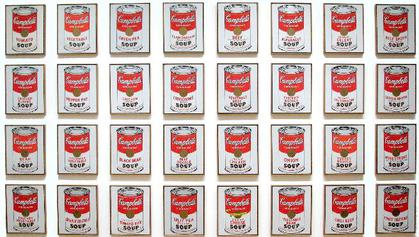Soupcon History
This is how soup became a weapon.
There is a legendary saying, attributed to either Napoleon or Frederick the Great, that “an army marches on its stomach.” Though there is no proof that either of them actually said it, Napoleon must have given the concept a lot of thought. After all, his “Grand Armee” was notable for being one of the largest in history, and in several calamitous episodes of their military campaigns such as in Egypt or later in Russia, they were so ill-prepared that the only ones who ate well were the buzzards who trailed after the dying soldiers. Yum.
One historical certainty, however, is that Napoleon offered a reward of 12,000 francs to the first person who could devise a method to preserve huge quantities of food. The winning method was provided by Nicholas Appert, a confectioner and brewer, who realized that food cooked within a sealed glass container would remain untainted as long as the seal remained unbroken. However, glass was prone to breaking, and over time the process migrated to cast iron. The result was an imperishable container of food, which looked quite a bit liked the “canister” one shoves down a cannon muzzle. Thus from “canister” we get “canned goods.” Boom.
In 1810, England’s Royal Navy started getting its canned food from an inventor named Peter Durand, who had perfected a lighter can lined with tin. Perhaps these lighter containers made the English ships more nimble, and helped England wear down and defeat Napoleon just five years later. Merde.
Innovation in canned goods accelerated in the industrial era. Perhaps the most important invention on the American side of the pond came in 1897, when Dr. John T. Dorrance invented a way to take a lot of the heaviest ingredient – water – out of soup, thus “condensing” it. This made soup more affordable to everyday folks. Though it had no direct military effect, Campbell’s Soup was launched with red-and-white labels which were patterned after the colors of Cornell University’s football team. And that may have pissed off the team just up the road in Philly, and made the annual Penn-Cornell game a little more hard-fought. Ouch.
Today, soup can sizes have been largely standardized in the United States. The classic can of Campbell’s soup comes in what is known in the trade as a #300. It measures 3″ by 4 7/8″ and weighs about a pound. It fits nicely in the hand and – if you consider that a baseball weighs about a half-pound – one could probably throw it about 50 feet. So there’s logic in the President’s recent accusation that leftist agitators are hurling Cream of Celery at law enforcement officials. But I must protest his assertion that a soup can is “better than a brick” in that the brick weighs about four pounds and packs a much harder punch. Oomph.
And as long as our leader is being creative (read: making things up), we should support his efforts. This Labor Day weekend every chain store in the country will run their annual bulk sale on Tomato, Chicken Noodle and Cream of Mushroom. Good value for your pandemic hoard. But if you are going out “souping” this weekend please, be more creative with your Campell’s varieties. Imagine the creative messages you can send. Whee.
Chicken Wonton: It’s like a brick from ‘Jina
Cream of Cremini and Shiitake: Heh
Cream of Shrimp: Take that, Stephen Miller
Disney Princess: Nasty!
Double Noodle: Cracks open twice as many heads
French Onion: NATO calling
Manhattan Clam: What tax audit?
Pepper Pot: “Hey I just Pepper Potted the Man”
Split Pea: Splits heads
Let the soup riots begin. Mmm Mmm Good.
(Attention: Clean up in Lownsdale Park, Clean up in Lownsdale Park)
